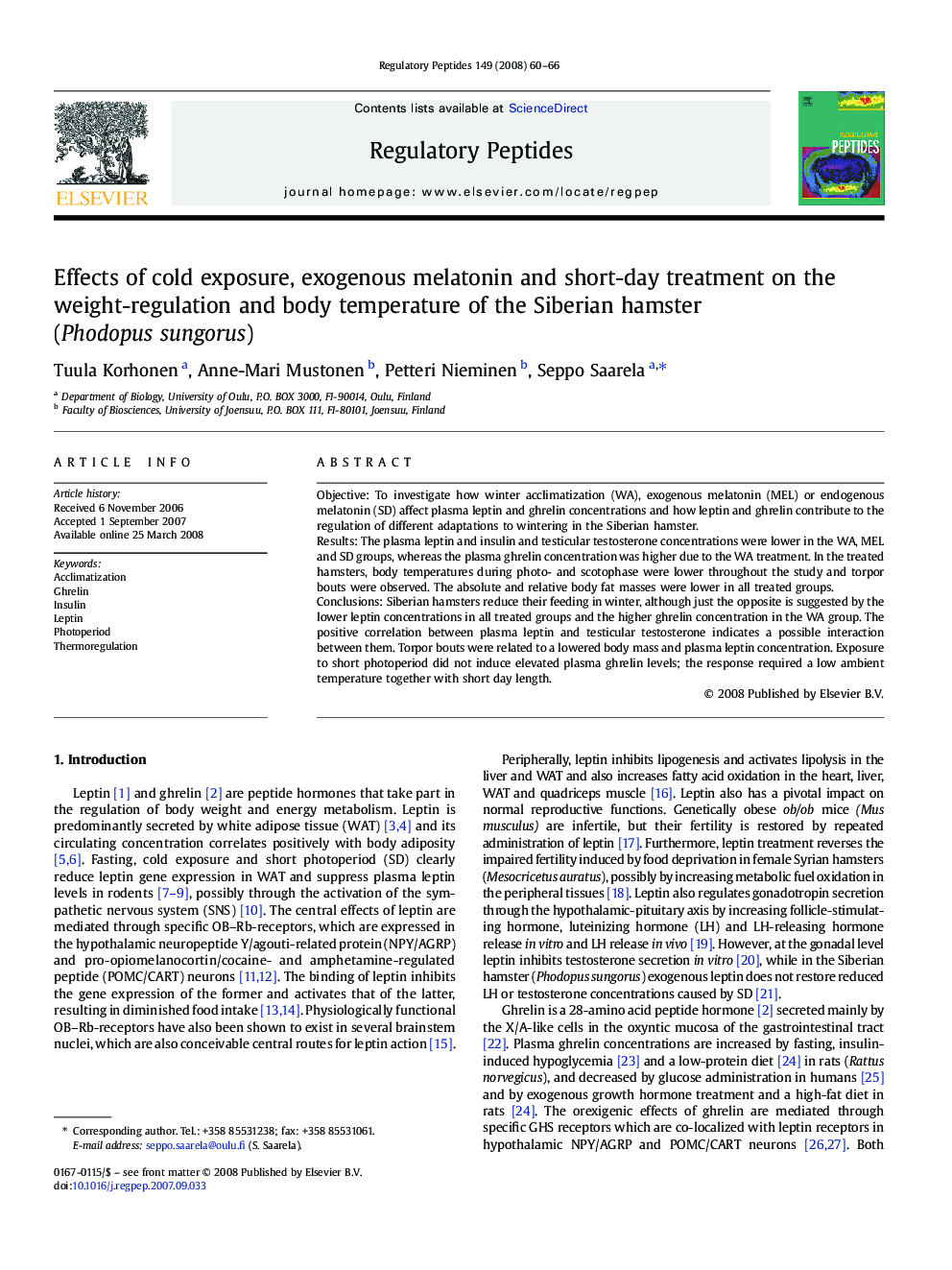| Article ID | Journal | Published Year | Pages | File Type |
|---|---|---|---|---|
| 2023137 | Regulatory Peptides | 2008 | 7 Pages |
ObjectiveTo investigate how winter acclimatization (WA), exogenous melatonin (MEL) or endogenous melatonin (SD) affect plasma leptin and ghrelin concentrations and how leptin and ghrelin contribute to the regulation of different adaptations to wintering in the Siberian hamster.ResultsThe plasma leptin and insulin and testicular testosterone concentrations were lower in the WA, MEL and SD groups, whereas the plasma ghrelin concentration was higher due to the WA treatment. In the treated hamsters, body temperatures during photo- and scotophase were lower throughout the study and torpor bouts were observed. The absolute and relative body fat masses were lower in all treated groups.ConclusionsSiberian hamsters reduce their feeding in winter, although just the opposite is suggested by the lower leptin concentrations in all treated groups and the higher ghrelin concentration in the WA group. The positive correlation between plasma leptin and testicular testosterone indicates a possible interaction between them. Torpor bouts were related to a lowered body mass and plasma leptin concentration. Exposure to short photoperiod did not induce elevated plasma ghrelin levels; the response required a low ambient temperature together with short day length.
